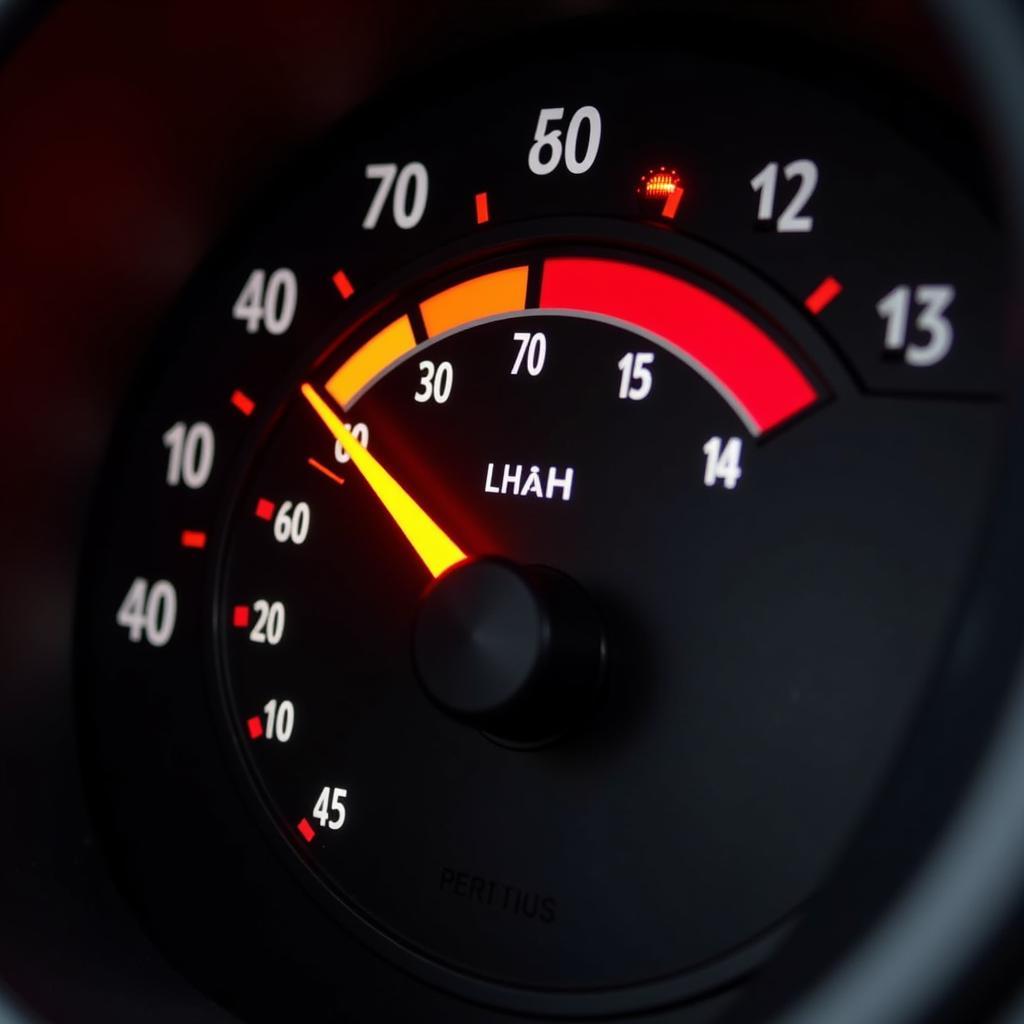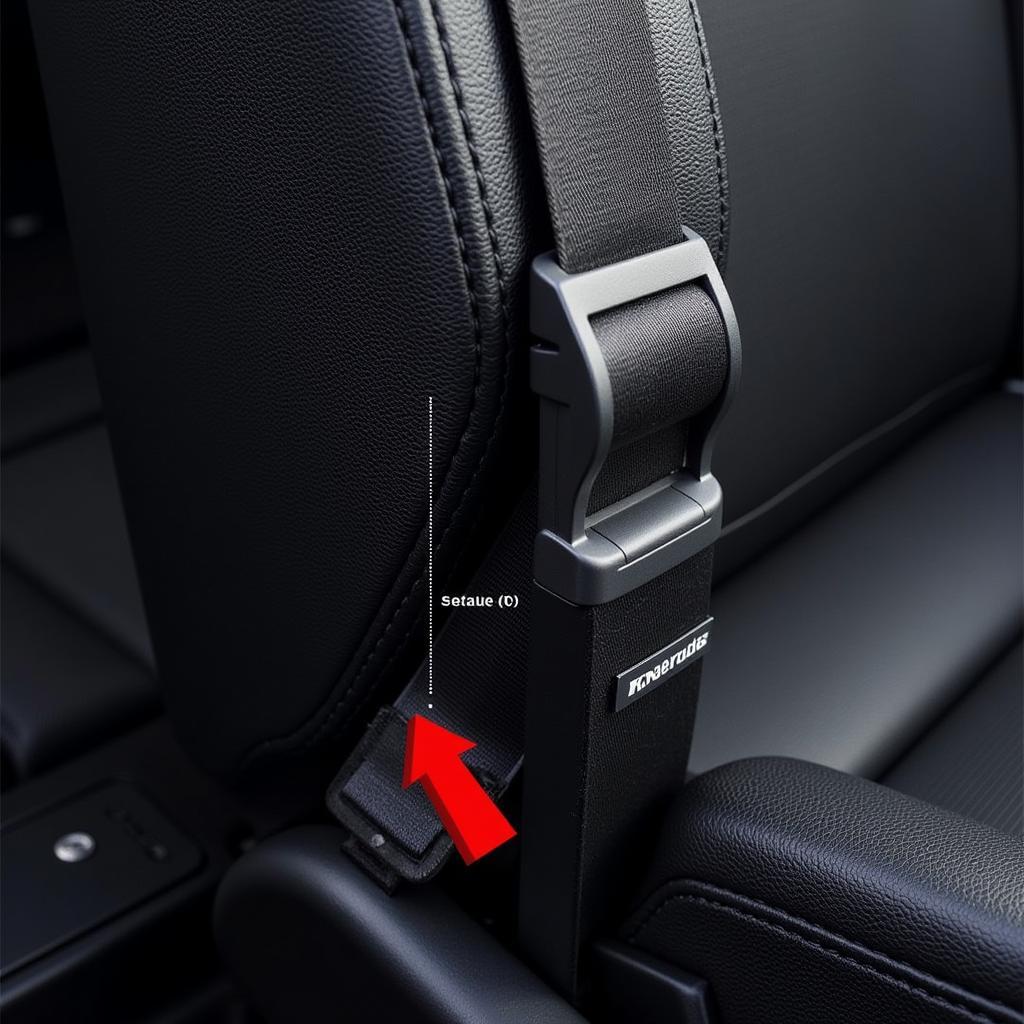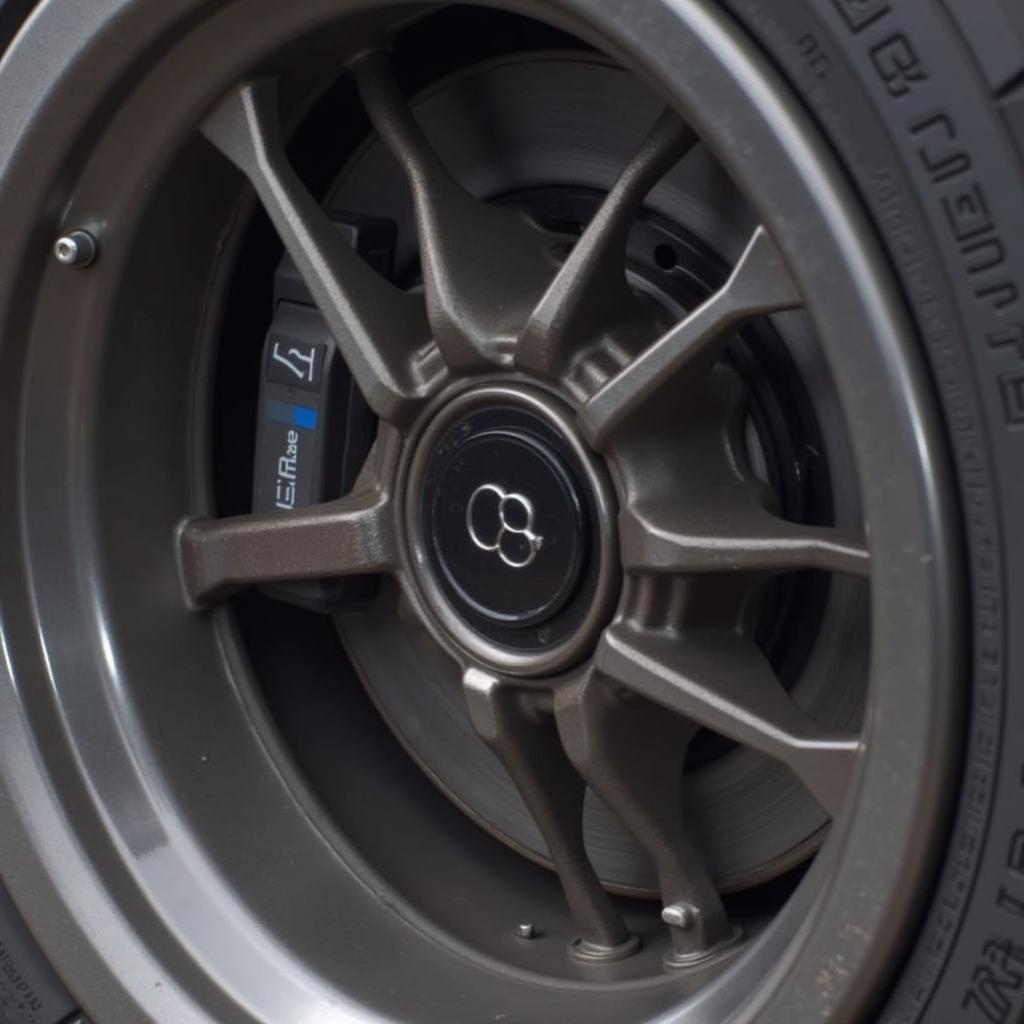The brake air pressure warning light is a crucial safety feature in many vehicles, especially those equipped with air brakes like trucks and buses. This light alerts drivers of a drop in air pressure within the brake system, which could significantly impact braking performance and lead to hazardous situations.
Understanding Your Vehicle’s Air Brake System
Before delving into the warning light itself, it’s important to have a basic understanding of how air brake systems function. Unlike traditional hydraulic brake systems found in most cars, air brakes use compressed air to engage the brakes.
This system relies on an air compressor, air storage tanks, valves, and lines to deliver pressurized air to the brake chambers. When you apply the brakes, the air pressure signals the brake chambers to push against the brake shoes or pads, creating the friction needed to slow down or stop the vehicle.
What Triggers the Brake Air Pressure Warning Light?
The brake air pressure warning light is designed to illuminate when the air pressure in the system falls below a safe operating level. This drop in pressure can occur due to various reasons, including:
- Air Leaks: Leaks can develop in the air lines, fittings, or components like the air compressor or air dryer, leading to pressure loss.
- Failing Air Compressor: The air compressor is responsible for building and maintaining air pressure. A malfunctioning compressor won’t be able to generate sufficient pressure.
- Low Air in the System: This could be due to a faulty air governor, which regulates the air pressure in the system, or a simple case of forgetting to build up enough air pressure before driving.
- Worn Brake Components: Excessively worn brake shoes, drums, or other components can cause air to escape, reducing system pressure.
 Brake air pressure gauge with warning light
Brake air pressure gauge with warning light
Dangers of Ignoring the Warning Light
Ignoring the brake air pressure warning light is extremely risky. Driving with low air pressure in your braking system severely compromises your ability to stop the vehicle safely and can lead to:
- Longer Stopping Distances: With reduced air pressure, the brakes won’t engage as effectively, significantly increasing the distance required to come to a complete stop.
- Loss of Brake Power: In severe cases, you might experience a complete loss of braking power, making it impossible to slow down or stop the vehicle.
- Jackknifing: For vehicles with trailers, low air pressure can cause the trailer brakes to malfunction, increasing the risk of jackknifing, especially during sudden braking.
Troubleshooting the Brake Air Pressure Warning Light
If your brake air pressure warning light comes on, it’s crucial to address the issue immediately. Here’s a step-by-step guide to help you troubleshoot the problem:
- Find a Safe Location: Pull over to the side of the road or find a safe location away from traffic.
- Check the Air Pressure Gauge: Most vehicles with air brakes have an air pressure gauge on the dashboard. Observe the gauge reading to determine the air pressure level.
- Listen for Air Leaks: With the engine running, listen carefully for any hissing sounds that might indicate an air leak.
- Inspect Air Lines and Fittings: Visually examine the air lines, hoses, and fittings for any signs of damage, cracks, or loose connections.
 Inspecting air brake system for leaks
Inspecting air brake system for leaks
- Check the Air Compressor: Ensure the air compressor is engaging and building pressure. You should hear it cycling on and off to maintain pressure in the system.
- Inspect the Air Dryer: The air dryer removes moisture from the air system, preventing corrosion. Check for any signs of malfunction or blockage.
When to Seek Professional Help
While some causes of low air pressure might be easily identifiable and fixable, others require specialized knowledge and tools. If you’re unable to diagnose the problem yourself or suspect a more complex issue, it’s crucial to seek professional help from a qualified mechanic experienced with air brake systems. They can perform a thorough inspection, diagnose the root cause, and make the necessary repairs to ensure your vehicle’s braking system functions safely and reliably.
Preventive Maintenance is Key
Regular preventive maintenance is essential for keeping your air brake system in optimal condition and preventing unexpected issues. This includes:
- Routine Inspections: Regularly inspect your air lines, fittings, and components for signs of wear and tear.
- Air Dryer Maintenance: Follow the manufacturer’s recommendations for air dryer cartridge replacement and maintenance.
- Brake System Draining: Drain the air tanks regularly to remove any accumulated moisture that can lead to corrosion.
[triumph tr6 brake pressure warning switch]
FAQs about Brake Air Pressure Warning Lights
1. Can I continue driving with the brake air pressure warning light on?
It’s highly dangerous to continue driving with the brake air pressure warning light illuminated. Doing so puts you at risk of brake failure and potential accidents.
2. How often should I check my air brake system?
It’s recommended to visually inspect your air brake system components at least once a week. For more thorough inspections and maintenance, refer to your vehicle manufacturer’s guidelines.
3. How long does it take to build air pressure in an air brake system?
The time required to build air pressure varies depending on the vehicle and system size. Typically, it takes a few minutes for the compressor to build sufficient pressure.
4. Can I use starting fluid to fix an air leak?
Using starting fluid to find air leaks is dangerous and can damage your air brake system components. It’s best to use soapy water or a dedicated leak detection solution for this purpose.
[trailer brake system warning]
Conclusion
The brake air pressure warning light is a crucial safety feature in vehicles equipped with air brake systems. Understanding its importance, potential causes for illumination, and appropriate troubleshooting steps can help you stay safe on the road. Never ignore this warning light, and if in doubt, seek professional assistance to diagnose and address any issues promptly. Remember, maintaining a properly functioning brake system is paramount for your safety and the safety of others on the road.


